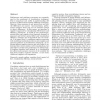Free Online Productivity Tools
i2Speak
i2Symbol
i2OCR
iTex2Img
iWeb2Print
iWeb2Shot
i2Type
iPdf2Split
iPdf2Merge
i2Bopomofo
i2Arabic
i2Style
i2Image
i2PDF
iLatex2Rtf
Sci2ools
APVIS
2006
2006
Predicting graph reading performance: a cognitive approach
Performance and preference measures are commonly used in the assessment of visualization techniques. This is important and useful in understanding differences in effectiveness between different treatments. However, these measures do not answer how and why the differences are caused. And sometimes, performance measures alone may not be sensitive enough to detect differences. In this paper, we introduce a cognitive approach for visualization effectiveness and efficiency assessment. A model of user performance, mental effort and cognitive load (memory demand) is proposed and further mental effort and visualization efficiency measures are incorporated into our analysis. It is argued that 1) combining cognitive measures with traditional methods provides us new insights and practical guidance in visualization assessment. 2) analyzing human cognitive process not only helps to understand how viewers interact with visualizations, but also helps to predict user performance in initial stage. 3) ...
| Added | 30 Oct 2010 |
| Updated | 30 Oct 2010 |
| Type | Conference |
| Year | 2006 |
| Where | APVIS |
| Authors | Weidong Huang, Seok-Hee Hong, Peter Eades |
Comments (0)

